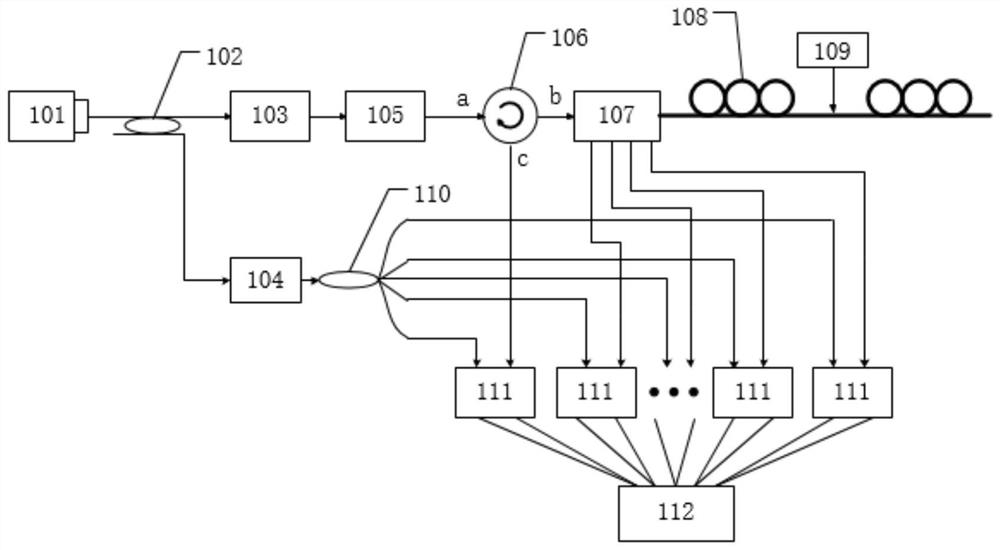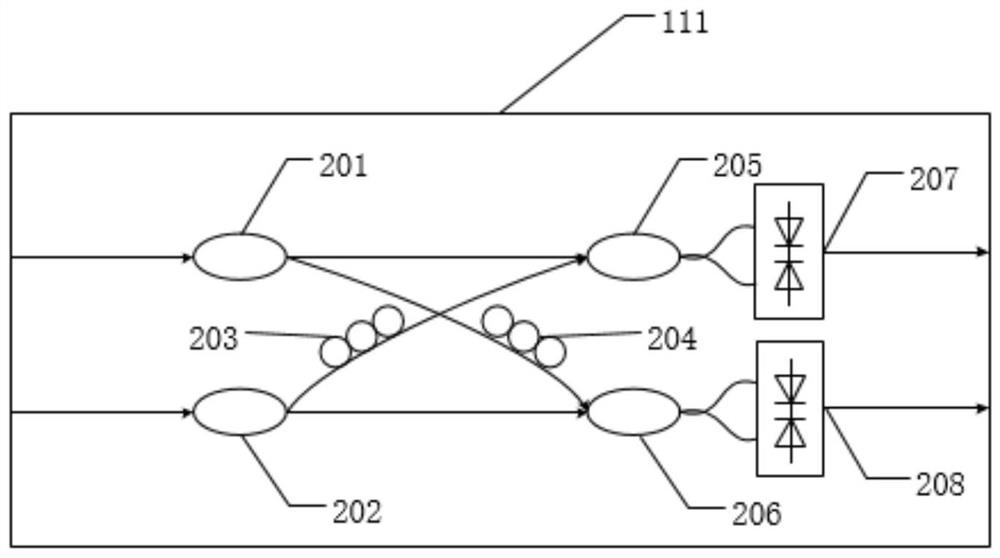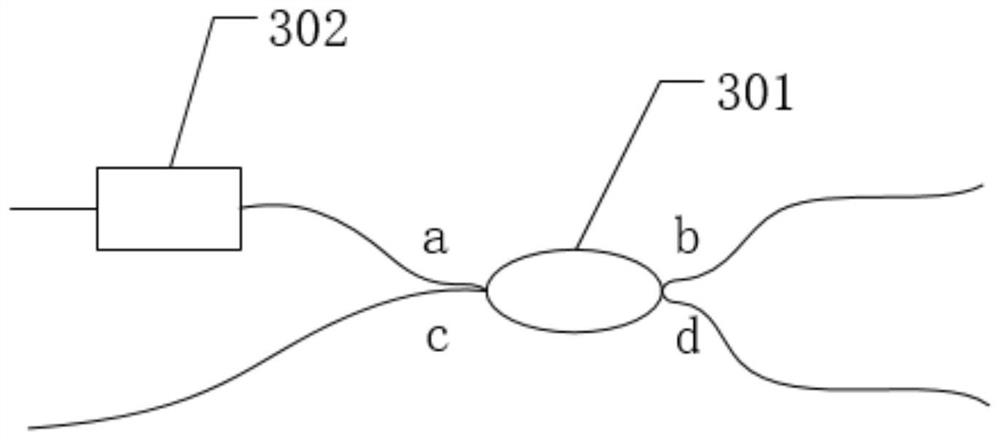High signal-to-noise ratio acoustic sensor based on multimode optical fiber
An acoustic sensor and high signal-to-noise ratio technology, applied in the field of high signal-to-noise ratio acoustic sensors, can solve the problems that the number of frequency diversity is limited by the system bandwidth and it is difficult to achieve large-scale multiplexing
- Summary
- Abstract
- Description
- Claims
- Application Information
AI Technical Summary
Problems solved by technology
Method used
Image
Examples
Embodiment 1
[0107] figure 1 It is a schematic diagram of the overall structure of the acoustic sensor with high signal-to-noise ratio based on the multimode optical fiber of the present invention. Depend on figure 1It can be seen that the multimode optical fiber-based high signal-to-noise ratio acoustic sensor device of the present invention comprises a multimode optical fiber-based high signal-to-noise ratio acoustic sensor. The output port of the laser 101 is connected with the input port of the first fiber coupler 102, the first output port of the first fiber coupler 102 is connected with the optical signal input port of the acousto-optic modulator 103, and the second output port of the first fiber coupler 102 The port is connected to the optical signal input port of the first amplifier 104, the output port of the first amplifier 104 is connected to the input port of the 1×N fiber coupler 110, the optical signal output port of the acousto-optic modulator 103 is connected to the optica...
Embodiment 2
[0111] The detection part of the sensor of the present invention may also include an array detection module, and the schematic diagram of the system structure of this embodiment is as follows Figure 6 shown. The output port of the laser 601 is connected to the input end of the fiber coupler 602, the first output end of the fiber coupler 602 is connected to the optical signal input end of the acousto-optic modulator 603, and the optical signal output port of the acousto-optic modulator 603 is connected to the second amplifier The optical signal input terminal of 604 is connected, and the output port of the second amplifier 604 is connected with a single-mode input port of the device 605 for mode multiplexing, and launches to the device 605 for multiplexing with the base mode LP01 mode , high-order modes in multimode fibers can be excited. The multimode output port of the device 605 for mode multiplexing is connected to the multimode fiber 606, the multimode fiber 606 is conne...
Embodiment 3
[0114] The sensor of the present invention can also use two photon lanterns to multiplex and demultiplex the modes respectively, such as Figure 7 shown. The output port of the laser 701 is connected to the input port of the first fiber coupler 702, the first output port of the first fiber coupler 702 is connected to the optical signal input port of the acousto-optic modulator 703, and the second output port of the first fiber coupler 702 The port is connected to the optical signal input port of the first amplifier 704, the output port of the first amplifier 704 is connected to the input port of the 1×N fiber coupler 712, the optical signal output port of the acousto-optic modulator 703 is connected to the second amplifier 705 The optical signal input terminal is connected, and the output port of the second amplifier 705 is connected with one of the single-mode input ports of the device 706 for mode multiplexing, and the multimode output of the device 706 for mode multiplexing...
PUM
 Login to View More
Login to View More Abstract
Description
Claims
Application Information
 Login to View More
Login to View More - R&D
- Intellectual Property
- Life Sciences
- Materials
- Tech Scout
- Unparalleled Data Quality
- Higher Quality Content
- 60% Fewer Hallucinations
Browse by: Latest US Patents, China's latest patents, Technical Efficacy Thesaurus, Application Domain, Technology Topic, Popular Technical Reports.
© 2025 PatSnap. All rights reserved.Legal|Privacy policy|Modern Slavery Act Transparency Statement|Sitemap|About US| Contact US: help@patsnap.com



